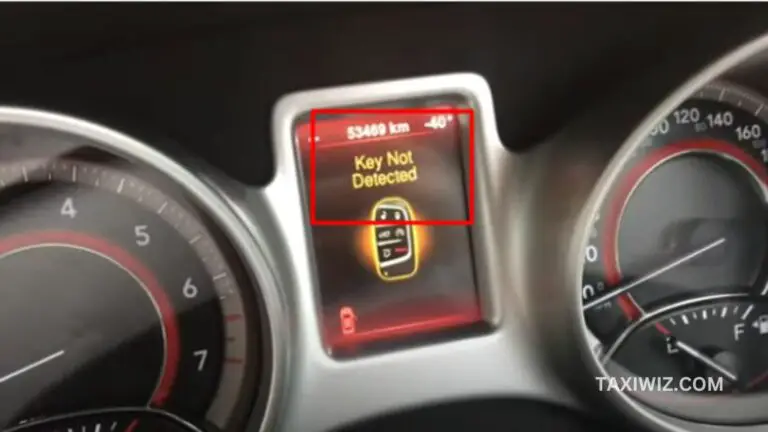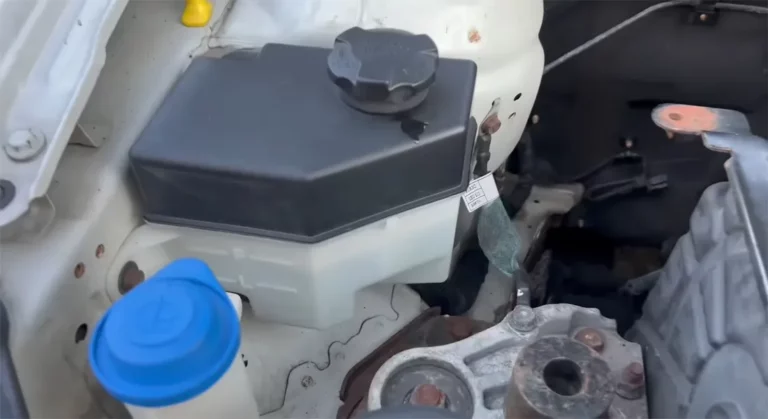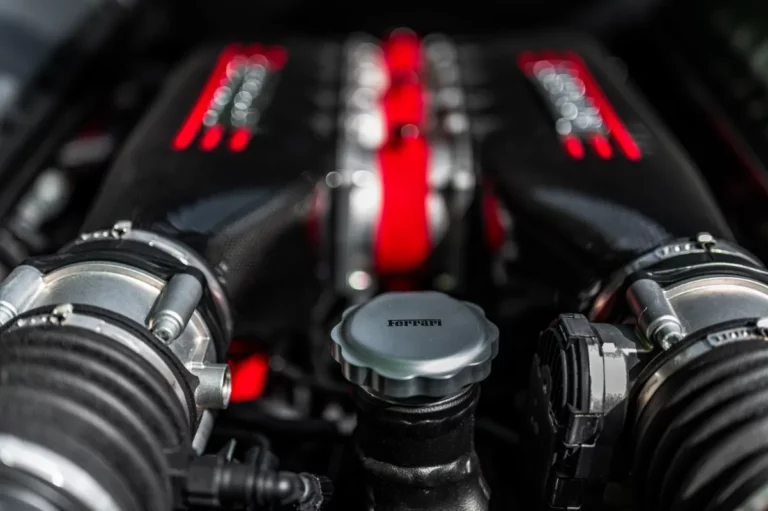Check Engine Light Comes On And Off – Reasons & Their Fixes
If the Check Engine Light Comes On And Off, then this indicates that there is some sort of problem with your car’s engine. There are a lot of factors that can affect the performance and usability of an engine:
- A problem with the engine components
- Issues with sensors
- Vehicle monitoring system glitches
- Fuel & coolant issues
- Environmental factors
Sometimes, there is more than one factor that triggers the check engine light on your dashboard. Don’t worry, as in this guide,we will go through all of them and provide solutions as well.
7 Reasons Why the Check Engine Light Comes On And Off & Their Fixes
Here are the most common reasons behind the check engine light coming on and off:
#1. Faulty Loose Gas Cap
One of the most common causes for check engine lights to come off is a loose or faulty gas cap. The gas cap plays the role of sealing the fuel tank so that proper pressure is maintained.
This ensures that the fuel integrity is maintained, as the fuel vapors won’t escape if the cap is placed tightly.
If that is not the case, then there will be a small leakage in the fuel system, which the fuel vapor pressure sensors will pick up as the pressure decreases.
And when that reaches a certain level, the sensors will notify your car’s main system which will trigger the check engine light.
How to Fix This
To solve this issue, simply find the gas cap in your car’s engine and tighten it. Most of the time, tightening will do the job, but if the cap has taken any damage, then it is best to replace it.
#2. Issues with Sensors
Another common reason for seeing the check engine light is malfunctioning sensors. There are quite a handful of sensors placed around your vehicle that starts to monitor the components as soon as you power up your car.
If one of them is failing, especially the ones that are connected to the engine, then you are most likely to see the check engine light pop up.
The sensors that will generate this warning are the oxygen sensor, throttle position sensor, mass airflow sensor, camshaft, or crack shaft position sensors.
When issues with sensors are considered, it can be a malfunction, it can be damaged sensors, or sometimes the issue can be as simple as something blocking the sensors from properly interpreting some data.
So, make sure to check each sensor on your car and ensure that they are working properly before you move in to find another reason for your car showing the check engine lights.
How to Fix This
First of all, find out which sensors aren’t functioning and causing the error. Then find out why they are failing to send data to the system.
Before trying any other solution, clean the sensors and their surrounding area, as most of the time, dust and dirt accumulation can interfere with a sensor’s functionality which can lead to warnings.
Most of the time, it isn’t much effective or cost-friendly to repair sensors; you should get your car sensors examined by a professional if you want to repair them. But if the sensors have taken damage, then it is better to replace them completely.
Do keep in mind that a certain level of expertise is required to replace car engine sensors. So, unless you have that experience, we recommend that you seek the help of a professional mechanic on this one.
#3. Malfunctioning Catalytic Converter
The primary job of the catalytic converter is to reduce any harmful emissions. It does this by converting the pollutants into mild harmful substances with the help of various chain chemical reactions.
So, if the catalytic converter stops performing optimally, there will be much more harmful emissions which can damage core components and the engine of your vehicle severely.
To prevent this situation from occurring, your vehicle’s automatic protection system will kick in and trigger the check engine light option on your dashboard.
How to Fix This
If you suspect that the catalytic converter is malfunctioning, then you will have to take your car to a professional to verify this hypothesis. With the help of an OBD scanner, it will be quite easy to find if that is the case or not.
With proper repairs, the catalytic converter should start to work optimally again. But sometimes, it is better to replace the part than to repair it cause repairs can become quite costly depending on your car model.
Keep in mind that catalytic converter replacement or repair means that you will have to take most of the parts of your car apart. So, don’t try to do it by yourself unless you have proper knowledge and experience on how to disassemble engine components and other car parts.
#4. Issues with Ignition Coils or Spark Plugs
Engine misfires are also another reason why you will see the check engine light illuminating your dashboard. Most of the time, this is caused by worn-out and faulty ignition coils and spark plugs.
Sometimes dust and dirt accumulatein these components, which results in the system noticing a malfunction and making the check engine light blink.
Often these components suffer from overheating, but if you can take proper care of your engine, then that possibility becomes quite scarce.
How to Fix This
When the spark plug and ignition coil are causing engine troubles, the first thing you should do is take them out and clean the dust and dirt. Sometimes you might have to put in a bit of oil as well.
If the components are too worn out, then the only option that you have is to replace them. Repairing worn-out spark plugs and ignition coils isn’t worth the investment, as they will go bad pretty soon.
#5. An issue with the Coolant
Overheating is a common problem, mostly in older vehicle models. Coolants allow a car engine to cool down while running at full power. But if the proper amount of Coolant is in the system, then the engine will start to overheat.
If your car is too overheated, then the engine check light will start to illuminate, and if you don’t take proper action, you might end up with a dead engine.
From coolant leakage to faulty parts, there are multiple factors that you will have to consider if you want to solve this issue.
How to Fix This
If there is Coolant leaking from your vehicle, then you will need to cover and patch that spot up as soon as possible. Keep an eye out on your coolant level, and if you see a sudden significant decrease, then you can be assured that Coolant is leaking.
Sometimes Coolant can’t pass through some parts of the engine, which leads to it overheating. So, follow Coolant’s travel path and find out if there is something that is blocking the pathway.
#6. Wire & Connection Issue
If there is some sort of damage or fault in the car’s internal wiring, which is closely related to the car engine, then you are likely to encounter the check engine light warning on the dashboard.
How to Fix This
To fix this problem, you will have to take the entire car apart and start from scratch. So, if you have figured out the wiring is at fault, then you will have to visit a mechanic because your DIY skills won’t be enough to tackle a problem as big as this one.
#7. Glitches & Malfunctions from the Engine Control Module
The ECM or Engine Control Module is responsible for the overall functionality of various systems of your car. If this system software starts to malfunction, then chances are you are getting notified about this through the engine check light coming on.
Do keep in mind that you should only come to this conclusion if the other common issues have been thoroughly checked and there was nothing found in the results.
How to Fix This
If the ECM is glitching or malfunctioning, then you will have to take this to an expert who can estimate the damage and figure out whether the ECM needs changing or not.
Don’t try to do this one on your own, as even experienced mechanics try to stay away from these types of problems.
Frequently Asked Questions (FAQs)
1. Is the Check Engine Light a Serious Issue?
Yes, it is. If you don’t take care of this issue at first, then it can severely damage your vehicle and can even lead to an accident.
2. Should I Drive with the Check Engine Light On?
No, not at all. This can severely damage the engine and other parts of the vehicle.
3. Can one sensor malfunction cause a ‘Check Engine Light’ warning?
Yes.Whether it is one or multiple, if there is an issue with one of the sensors connected to the engine, then it will cause a warning.
Final Thoughts
When you see that the check engine light keeps coming on and off, stop your vehicle immediately. If you left an engine untreated even after seeing the warning sign, then you might severely damage the engine.
But if you can find what is causing this issue and take steps as we have mentioned in this guide, then we are confident that you will be able to stop the check engine light from coming on and off.




